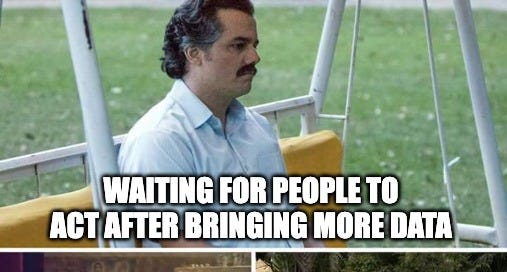The importance of words and ensuring an equitable transition
Hey there 👋
In our last learning circle, we were joined by Neel and Karishma to wrap up the reading of a 50-page report on the Psychology of Climate Change Communication. 50 pages sound a lot, no?
It definitely was, but we also took our sweet time to absorb it (2 weeks) while having so many important discussions as we went along. Slow and steady wins the race, right?
So, what we did learn in the report about how to talk about climate change?
Knowing our audience: All of us make assumptions about how the world works (our mental models), which we use to make decisions and process new information. Because of our confirmation bias, we tend to only agree with the information that fits what we already believe. But we can update the mental models of our audience. An effective way to do that is to first identify the “holes” in their current understanding and then, replace those holes with true facts.
Getting our audience’s attention: How we frame the problem of climate change can have a huge impact on whether our audience connects with the problem or not. As devastating as it is, talking about hurricanes in the US is unlikely to make a Mumbaikar worry about climate change. However, talking about how sea-level rise might make the Marine Drive go underwater might catch their attention. Similarly, we tend to value avoiding loss much more than realizing future gains and tend to underestimate future impacts compared to immediate ones. Preparing multiple frames beforehand while keeping these factors in mind can help us get our audience’s attention.
Translating scientific data into concrete experience: Charts and graphs, the primary modes used to communicate climate science, cater to the analytical side of our brain whereas our experiential side motivates us to take action. Sharing personal stories and using vivid imagery (e.g. in the form of film footage) is more likely to elicit an emotional response. Also, using scientific jargon can make people feel excluded from the conversation and sometimes can be interpreted completely wrongly.
Beware the overuse of emotional appeals: We should also be careful that we don’t overwhelm people with negative emotions because all of us have a finite capacity of worry and too much worrying can leave us emotionally numb. During such times, we often search for a single action that we can take that can make us feel better even if that action doesn’t reduce the risk of the actual problem. This single-action bias can be counteracted by providing multiple options with increasing levels of commitment.
Okay, that was a lot. So, congratulations on making it so far! 👏
The report also goes on to talk about how to address scientific and climate uncertainties, how we can tap into our social identities along with encouraging group participation, and finally how can we make behavior change easier.
During the session, Neel honed in on the idea that even a single word can make a huge difference and that led to a discussion around what is the right language to communicate about climate change in India. Is it English? Is it Hindi? What about those who don’t understand either? Karishma also shared about her experience in working on social impact communication that the toughest thing when it comes to communicating in local languages is getting the colloquial part right.
We concluded the session by talking about the fact that even though we need all our industries to move away from fossil fuels, we should remember that the fossil fuel industry also employs a lot of people. So, it is critical that while we are planning this transition to clean energy, we also chart out a plan to ensure a fair and just transition for these workers.
Finally, Neel and Karishma shared that the learning circles are valuable to them because they get a chance to actually go through some material regarding climate change and get a space to talk about the problem in the context of India. This made us feel really happy as both of these are the precise reasons for starting these learning circles.
We hope you enjoyed this sneak peek and we really hope that you are able to join in on some of the circles. We can’t wait to have you! :)
We are always looking for feedback on how we can improve. Please consider sharing your thoughts with us at ecorageous@gmail.com!
Also, we’ll be posting climate memes on our LinkedIn, Twitter, and Instagram. Do consider following us on those places if you’re keen on adding some climate humor to your feed.









